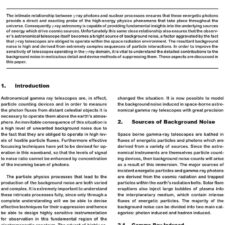The Gravitational Braking of Captured Moons Around Ringed Planets
£5.00
G. Bell (2022), JBIS, 75, pp.9-13
Refcode: 2022.75.009
DOI: n/a
Abstract:
Irregular moons are a class of satellite found orbiting all of the Solar System’s giant planets: as their orbits do not match those of their planets, they are theorised to have formed elsewhere in the Solar System and were subsequently captured into their observed orbits. Missions such as Cassini have contributed significant empirical data on irregular moons in the present day but this paper aims to develop our currently limited theoretical understanding of their origins and capture as it presents one of the first projects to connect moon capture with another feature common to all giant planets: ring systems. As a captured body gravitationally brakes around a ringed planet, it transfers orbital energy to the planetary system, a process which has been seen to leave distinctive signatures on the rings which may be used to constrain key parameters of this interaction, including the trajectory and timing. This paper presents a project which applies this technique to constrain scenarios for moon capture through conducting a series of computational simulations using the Python version of the astrophysical code REBOUND modelling the capture of the large irregular moon Phoebe by the planet Saturn and Phoebe’s effect on Saturn’s ring system. By helping to constrain scenarios for moon capture, this research will further our understanding of the moon systems of the giant planets while simulating the effects of a moon’s interaction with a ring system by offering insight into the formation and evolution of planetary rings, whether within our own Solar System or orbiting exoplanets.
Keywords: Captured Moons, Gravitational Braking





